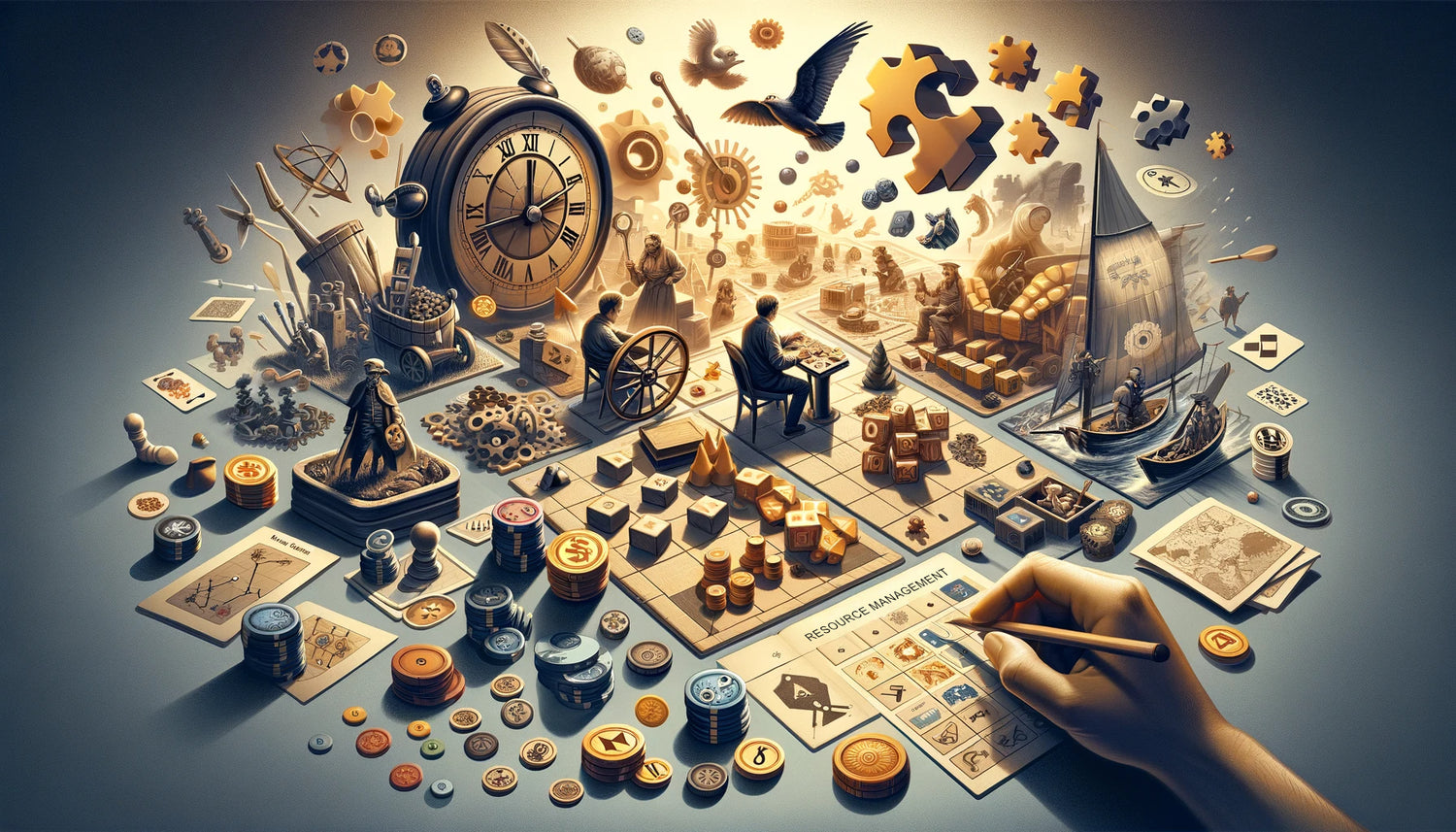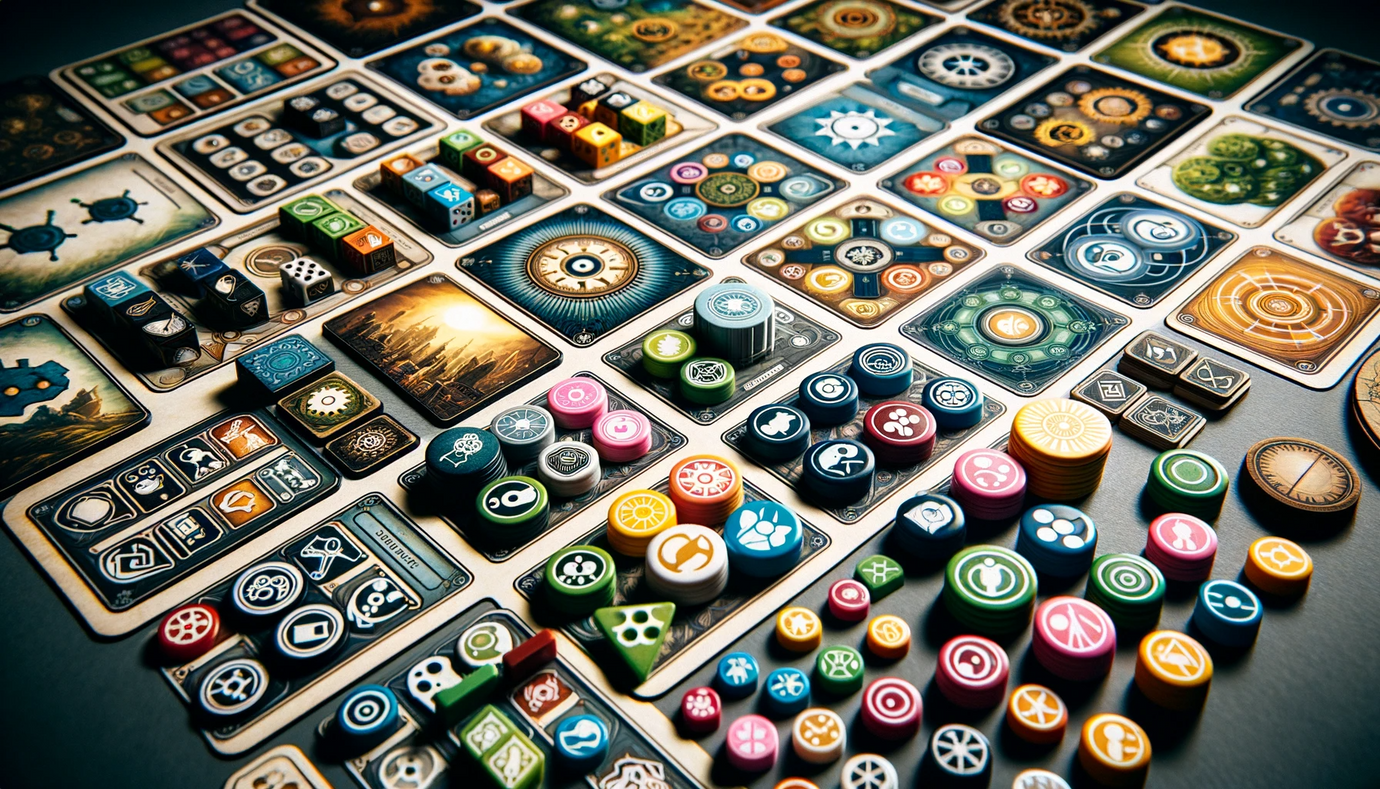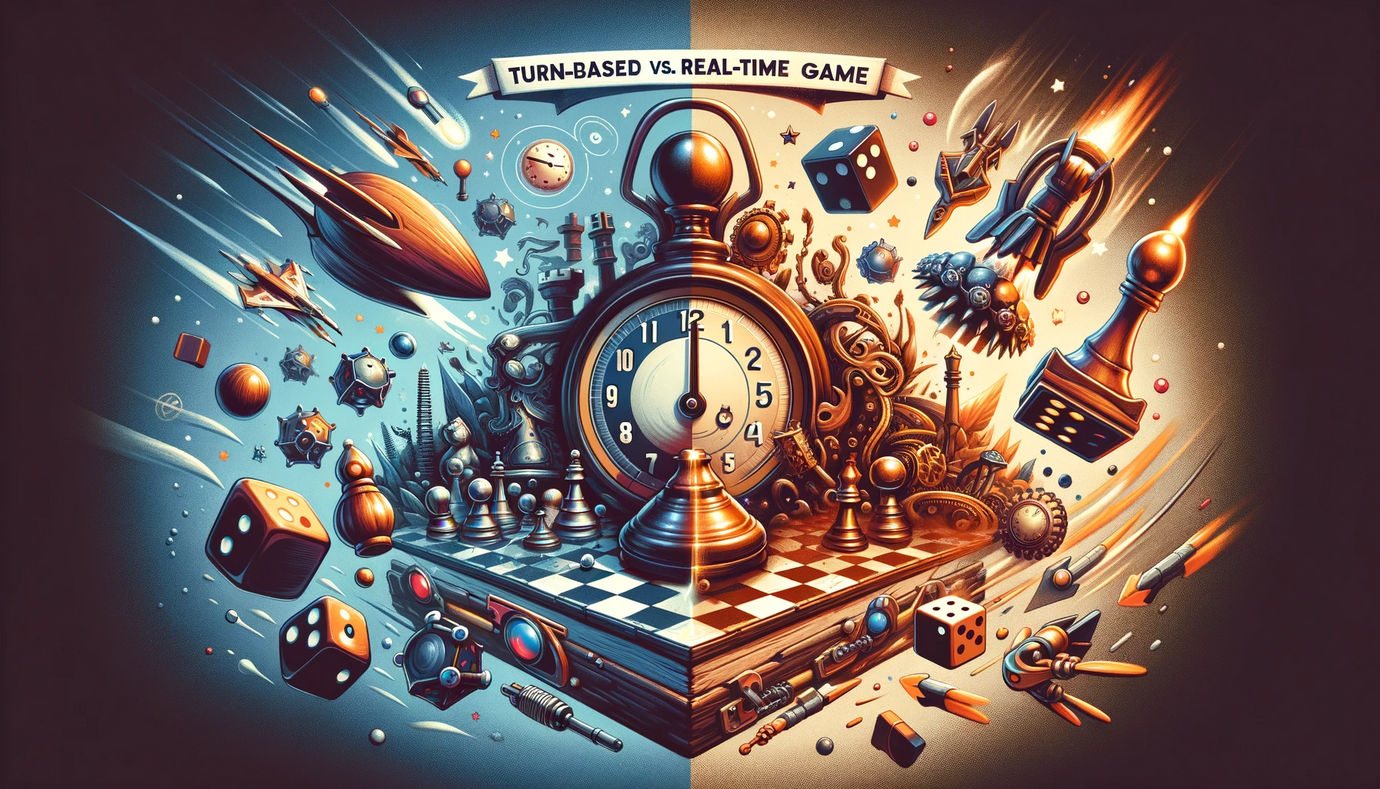Incorporating Resource Management Mechanics

Introduction
Resource management is a fundamental and versatile mechanic in many board and card games, appealing to players who enjoy strategic planning and optimization. Effective resource management mechanics can add depth and complexity to a game, challenging players to make thoughtful decisions about how to allocate their limited resources. This blog post will explore various aspects of incorporating resource management into your game, ensuring it adds strategic value and enhances the overall gameplay experience.
Understanding Resource Management in Games
Resource management in games typically involves players acquiring, using, and managing a set of resources (which can be anything from physical materials, currency, points, to abstract concepts like time or influence) to achieve objectives and gain an advantage.
1. Defining Resources in Your Game
Types of Resources: Identify what types of resources will be included in your game. Resources can be tangible, like wood, gold, or food, or intangible, like time, energy, or information.
Resource Relevance: Ensure that the resources are thematically appropriate and relevant to the game’s objectives and mechanics.
2. Balancing Resource Availability and Scarcity
Resource Distribution: Design how resources will be distributed throughout the game. Will they be evenly spread, scarce, or abundant?
Managing Scarcity: If resources are scarce, ensure that players have strategies to overcome or adapt to this scarcity, adding to the game's challenge.
3. Creating Resource-Based Objectives
Resource-Driven Goals: Establish game objectives that are driven by resource management. This could include building structures, advancing on a track, or accumulating a certain amount of resources.
Variable Objectives: Consider having variable objectives across different games or rounds to keep resource management strategies dynamic and engaging.
4. Integrating Resource Management with Other Mechanics
Synergy with Game Mechanics: Ensure that resource management interacts well with other game mechanics. For example, in a strategy game, resource management could be linked to territory control or player progression.
Multi-Use Resources: Design resources that have multiple uses or purposes, providing players with strategic choices on how to best utilize them.
5. Designing Resource Acquisition Mechanics
Methods of Acquisition: Determine how players will acquire resources. This can be through gathering, trading, resource production, or other means.
Risk vs. Reward: Introduce elements of risk and reward in resource acquisition. High-risk methods might yield more resources but with greater uncertainty or cost.
6. Implementing Trade and Exchange Systems
Player Interaction through Trade: If appropriate, include mechanics that allow players to trade or exchange resources. This can increase player interaction and strategic bargaining.
Balanced Exchange Rates: Ensure that the trade or exchange system is balanced and does not favor any particular strategy excessively.
7. Encouraging Strategic Planning and Allocation
Long-term vs. Short-term Planning: Design resource management mechanics that require players to balance short-term gains with long-term strategy.
Resource Allocation Challenges: Create scenarios or challenges where players must carefully consider how they allocate their resources, adding depth to decision-making.
8. Testing for Balance and Engagement
Playtesting for Balance: Thoroughly playtest the resource management aspects to ensure they are balanced and add to the game's strategic depth.
Feedback on Resource Dynamics: Gather feedback specifically on the resource management system. Is it engaging? Does it feel too punishing or too generous?
9. Enhancing Thematic Integration
Thematic Consistency: Make sure that resource management mechanics are consistent with the game’s theme. The way resources are handled should make sense within the game’s world.
Storytelling through Resources: Use resources to tell a story or build the world. For instance, in a survival game, managing resources like food and water can heighten the sense of immersion.
10. Finalizing Resource Management Mechanics
Refinement and Adjustment: Refine the resource management mechanics based on playtesting feedback. Ensure they provide a balanced and enjoyable challenge.
Clear Rules and Guidelines: Clearly outline the rules and mechanics of resource management in the game’s rulebook, ensuring they are easy to understand and follow.
Incorporating resource management mechanics into your game can significantly enhance its strategic depth and replayability. By carefully designing how resources are acquired, managed, and utilized, and ensuring they are integrated with the game’s theme and other mechanics, you can create a richer, more engaging gameplay experience. Remember, effective resource management challenges players to make tough decisions, plan strategically, and adapt to changing game dynamics, making for a compelling and rewarding experience.








